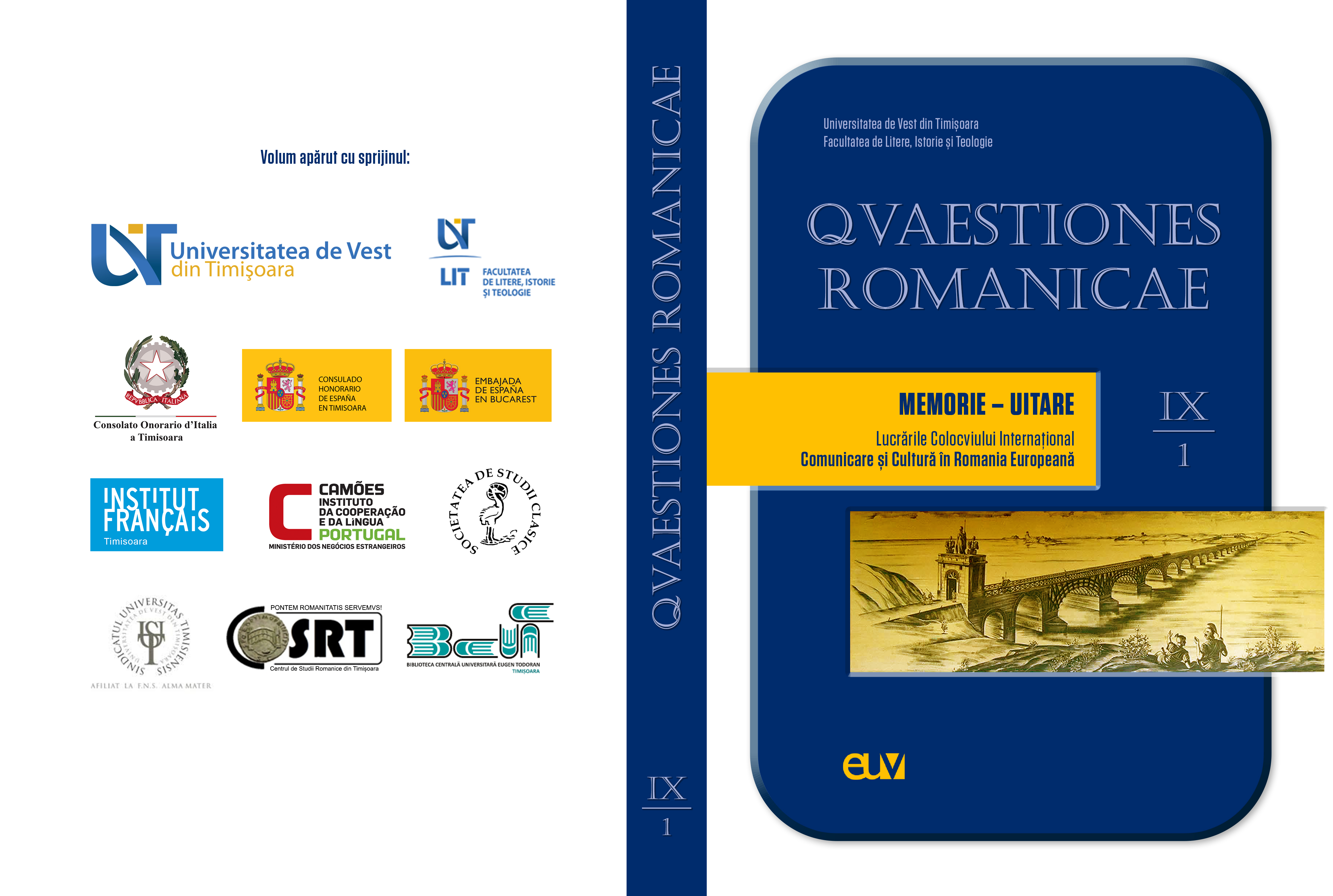Bucureştiul din scrierile memorialistice şi ficţionale ale lui Mircea Eliade sub pecetea amintirii-imagine
The city of Bucharest in the memorialistic and fictional writings of Mircea Eliade, under the seal of memory-image
Author(s): Anca Luminița EftenieSubject(s): Cultural history, Novel, Romanian Literature, Interwar Period (1920 - 1939)
Published by: Universitatea de Vest din Timişoara
Keywords: Bucharest; Henri Bergson; Mircea Eliade; hypostases; remembering-image;
Summary/Abstract: The purpose of this article is to outline the image that Bucharest has in the memorialistic and fictional writings of Mircea Eliade. First, we structured a theoretical picture of the relationship between remembering-image and memory. Thus, as the ancients observed, memories are often spoken of in the plural, as they precede memory. Moreover, Bergson identifies the “remembering-image”, a mixed phenomenon, an intermediate form between “imagining memory” and “repeating memory”, given that we can perceive the past only dynamically, not as pure memory, but to the extent in which it is actualized and transformed into a present image. It can be reproduced in writings or other artistic forms because essentially the duty of memory is to prevent forgetting. The city depicted by Mircea Eliade in Memoirs, Journal and literary texts overlaps with the concept mentioned above. For the historian of religions, Bucharest represents the center of his existential labyrinth, an axis of the world, to which he constantly refers, although geographically speaking, he is in other places. Thus one can identify a Bucharest lived directly, experienced in childhood, adolescence and maturity, evoked, reproduced, but also a space from which the writer detaches with the period of exile or experience in India, a city lived indirectly, recovered from memories and the stories of the others (collectively somewhat), as well as a produced, imagined Bucharest, reconstructed by associating old images in a new way, or one perceived by critics. I consider that this study is important because it immortalizes Mircea Eliade’s Bucharest under the seal of the relationship between remembering-image and memory.
Journal: Quaestiones Romanicae
- Issue Year: IX/2021
- Issue No: 1
- Page Range: 338-350
- Page Count: 13
- Language: Romanian

